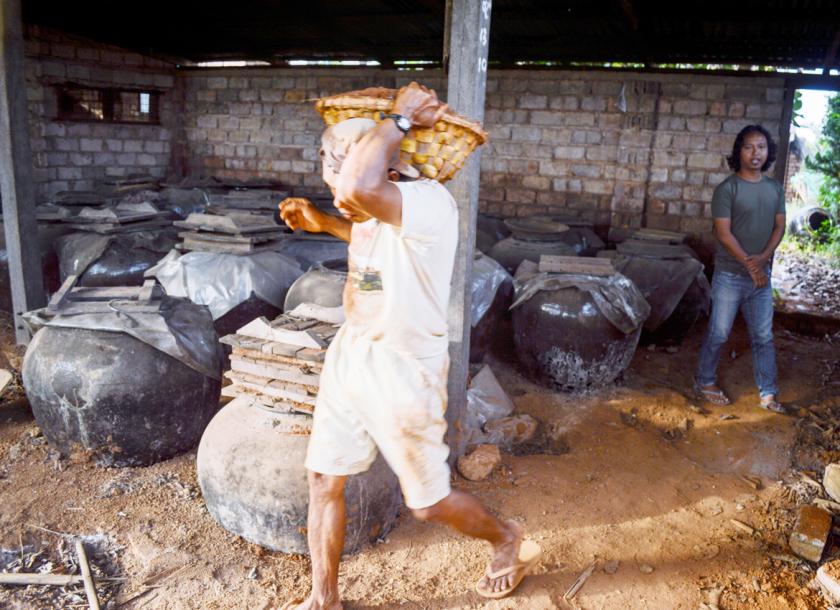Myanmar: Damson in distress
A local winery fights to repair the reputation of Pyin Oo Lwin’s damson wine.
A short drive along the main road from his family-owned winery in Pyin Oo Lwin, Nay Kon Htin recounts the horror of seeing his wine stocked in road-side shops, baking in the sunlight.
“You can see at the shops when you pass by. The wine bottles were sitting in direct sunlight,” he said. “No matter how good the wine quality is, they cannot stand the effects of weather. It damages my wine.”
Poor storage, he says, is just one of many issues hampering the reputation Pyin Oo Lwin’s iconic damson fruit wine.
Nay Kon Htin started Universal Winery in 2004 with the help of his uncle, at a time when there were only around five wineries in Pyin Oo Lwin. Now there are around a hundred local wineries producing both damson and grape wines.
The 36-year-old used to sell his damson wine at shops and tourist sites around Pyin Oo Lwin when his business first started, but now he only distributes it to nine places – indoor souvenir shops and hotels – after he found out that poor storage conditions were damaging the quality of his wine.
Many of the producers around Pyin Oo Lwin, including Universal, add sugar to their wine to balance out the natural acidity of the fruit, resulting in a wine that is rich and full-bodied.
But most local wineries sell their wine far too young, at only one or two years of age, which Nay Kon Htin says has damaged the reputation of damson wines.
“I don’t regard damson wine as wine,” said Kaung Htein Htein, a Yangon-based wine educator and consultant.
 Nay KonHtin leaves the wine cellar at Universal winery. Nyo Me/The Myanmar Times
Nay KonHtin leaves the wine cellar at Universal winery. Nyo Me/The Myanmar Times
“The wine is sweet and has no dryness so it can’t be paired with food. People don’t drink sweet wine because it lacks the real essence of wine,” he said.
Nay Kon Htin ages his wine for 5 to 12 years using a traditional method: storing it in glazed earthenware pots. He says that the extra aging produces a superior, more rounded, less sweet damson wine, one which he says is the choice of experienced local wine drinkers.
One bottle of Universal’s five-year-old wine sells for K6000, the nine year: K9000 and 12 years for K12,000 – double the price of other locally made damson wines.
Sweet wines might have suited the local palate a decade ago, but Myanmar’s tastes are changing. Today, imported old-world and new-world wines can be found cheaply at supermarkets in most major urban centres.
“People prefer foreign wine. I don’t blame them because foreign wines are certified and affordable,” Nay Kon Htin said.
The slightly pricier wines from Myanmar’s two main vineyards – Ayuthaya and Red Mountain – have been able to tap into the growing tourist market.
Damson wine is marketed mainly at locals from around Pyin Oo Lwin – most of Universal’s customers are middle-aged women from Mandalay, says Nay Kon Htin.
Unlike wine produced from grapes, there is no official certification process for damson wine. Production methods and quality control vary from producer to producer, with no regulation as to who can slap a Pyin Oo Lwin label on their bottle.
Without certification Kaung Htein Htein says Pyin Oo Lwin’s damson wine is more akin to locally distilled liquor than a wine. Without certification, damson wine won’t be able to break out of its small local market.
“French wine can be bought for around K12,000 a bottle in Myanmar. We cannot catch up to them in terms of their modern winemaking techniques,” said Nay Kon Htin.
“At least, compared to other wines made in Pyin Oo Lwin, my wine is good quality.”
Source: https://www.mmtimes.com/news/damson-distress.html


 English
English




